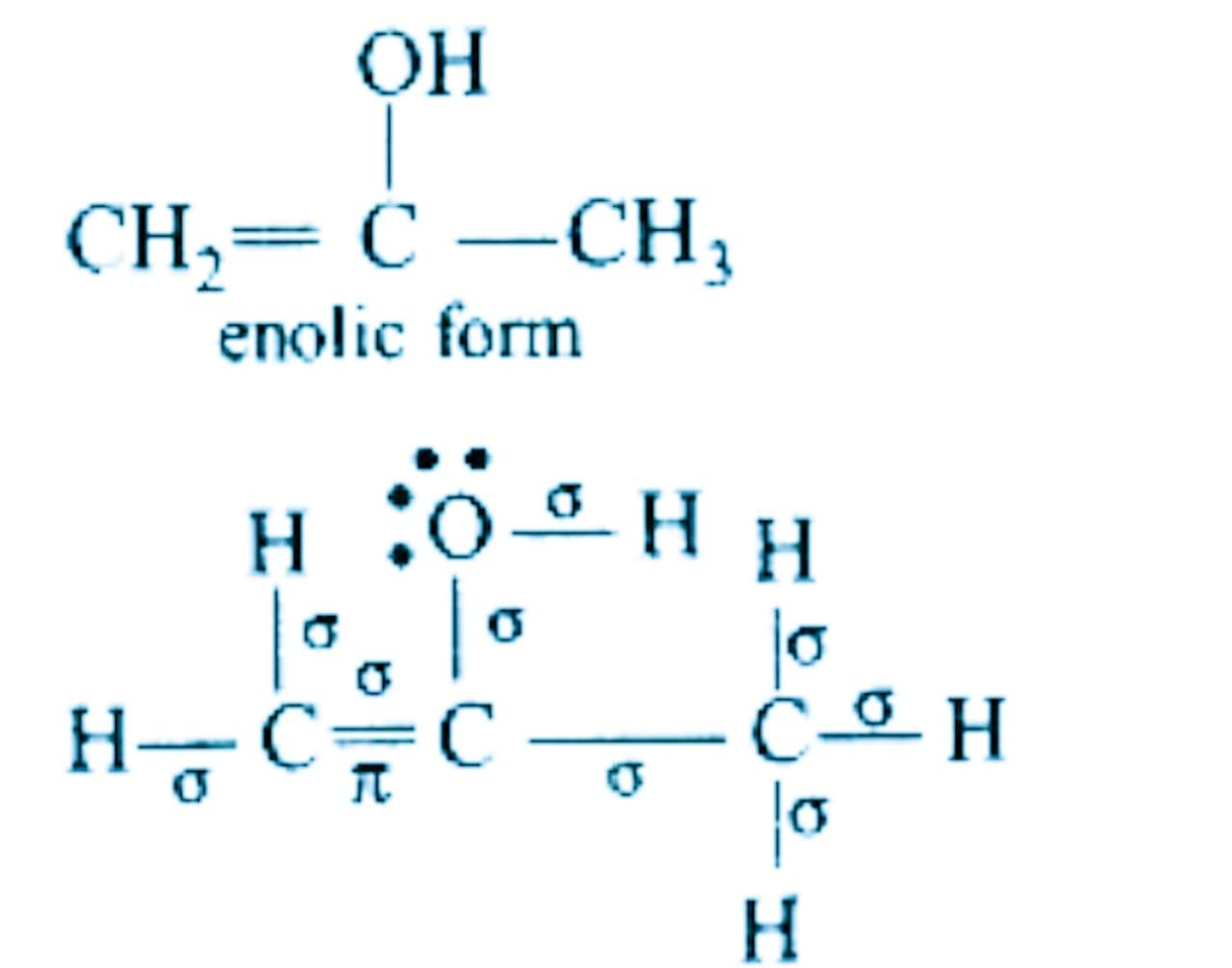Question
Question: The enolic form of acetone contains: - (a)- \[10\sigma -bonds\text{ }2\pi -bonds\text{ }and\text{...
The enolic form of acetone contains: -
(a)- 10σ−bonds 2π−bonds and 1 lonepair
(b)- 9σ−bonds 2π−bonds and 2 lonepairs
(c)- 8σ−bonds 2π−bonds and 2 lonepairs
(d)- 9σ−bonds 1π−bond and 2 lonepairs
Solution
For the enolic form, the oxy group changes to the hydroxyl group. The double bond shifts from carbon-carbon to carbon-oxygen. Enolic form occurs because of a special type of bonding.
Complete step by step answer:
In simple aldehydes and ketones like acetaldehyde, acetone, etc., the amount of enolic form is negligibly small. However, if the enolic form is stabilized by intramolecular hydrogen bonding or resonance, the amount of enolic form is much greater than the keto form.
In acetone, the enolic form is stabilized by intramolecular hydrogen-bonding.
The formula of acetone is CH3−CO−CH3
It is the ketonic form.
The formula of the enolic form of acetone is CH2=C(OH)−CH3.
The occurrence of keto-enol form is because of tautomerism. It is a special kind of functional isomerism in which the isomers exist in dynamic equilibrium with each other. It arises due to the migration of a hydrogen atom from one polyvalent atom to the other within the same molecule with the necessary rearrangement of linkages. The isomers obtained are called tautomers.

In the compound above there are 9σ−bonds.
There is 1π−bond, which has shifted from carbon-oxygen double bond in keto form to carbon-carbon double in enol form.
There are 2 lone pairs on the oxygen atom.
Hence, the correct option is (d)- 9σ−bonds 1π−bond and 2 lonepairs.
Note: You may get confused between ketonic and enolic form. While converting ketonic to enolic form or vice-versa the valency of each atom should be checked and completed, to avoid the mistake.
